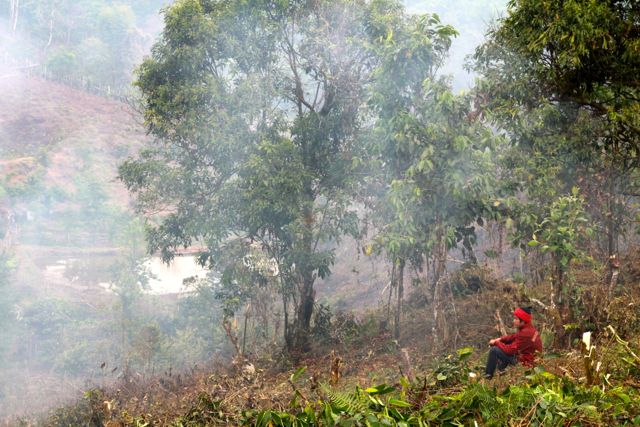Project Sekong 2013: This Time Of Year The Hills Are Aflame
The Lao government is trying to discourage the age-old practice of ŌĆ£slash and burnŌĆØ agriculture. Most Lao farmers consider the method, also called ŌĆ£swidden agriculture,ŌĆØ to be essential to maintaining their way of life. By employing fire to remove the vegetation, cut by hand and dried in the sun, a single family can clear a large tract of land with minimum effort.
The ash that remains after vegetation is burned blackens the soil and absorbs heat from the sun. Seeds germinate quickly in the warm soil and plants thrive in the absence of competing weeds. When the rainy season begins, the many tree roots that remain beneath the surface hold the soil in place and minimize erosion.
Thin, tropical spoils play out quickly and a parcel of land cleared by burning will only produce bountifully for a few years before it must be abandoned and allowed to return to a wild state, covered with native trees and plants. Subsequently, perhaps twenty years in the future, the parcel can be cleared again and brought back into production.
This time of year, February, March and April, is the time when most Lao farmers are burning the hills to clear them for planting. Satellite photos from space currently show the landmass of Laos obscured by clouds of smoke.
Eliminating slash and burn agriculture will bring environmental benefits and improve the respiratory health of rural people. But, ending the practice will require farmers to begin using chemical fertilizers to artificially enrich the soil and keep the land productive.

